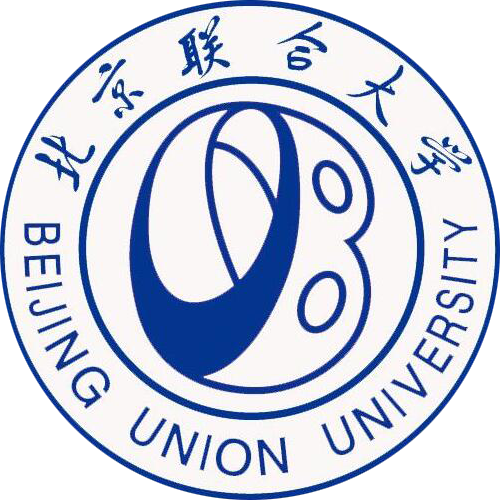详细信息
Hypoxia-Triggered Self-Assembly of Ultrasmall Iron Oxide Nanoparticles to Amplify the Imaging Signal of a Tumor ( SCI-EXPANDED收录 EI收录)
文献类型:期刊文献
英文题名:Hypoxia-Triggered Self-Assembly of Ultrasmall Iron Oxide Nanoparticles to Amplify the Imaging Signal of a Tumor
作者:Zhou, Huige[1,2,3];Guo, Mengyu[1,2,4];Li, Jiayang[1,2,3];Qin, Fenglan[1,2];Wang, Yuqing[1,2];Liu, Tao[1,2];Liu, Jing[1,2];Sabet, Zeinab Farhadi[1,2,4];Wang, Yaling[1,2,3,5];Liu, Ying[1,2,5];Huo, Qing[6];Chen, Chunying[1,2,3,4,5]
第一作者:Zhou, Huige
通讯作者:Chen, CY[1];Chen, CY[2];Chen, CY[3];Chen, CY[4];Chen, CY[5]
机构:[1]Natl Ctr Nanosci & Technol China, CAS Key Lab Biomed Effects Nanomat & Nanosafety, Beijing 100190, Peoples R China;[2]Natl Ctr Nanosci & Technol China, CAS Ctr Excellence Nanosci, Beijing 100190, Peoples R China;[3]Chinese Acad Med Sci, Res Unit Nanosci & Technol, Beijing 100021, Peoples R China;[4]Univ Chinese Acad Sci, Beijing 100049, Peoples R China;[5]GBA Res Innovat Inst Nanotechnol, Guangzhou 510700, Guangdong, Peoples R China;[6]Beijing Union Univ, Dept Biomed, Coll Biochem Engn, Beijing 100023, Peoples R China
第一机构:Natl Ctr Nanosci & Technol China, CAS Key Lab Biomed Effects Nanomat & Nanosafety, Beijing 100190, Peoples R China
通讯机构:[1]corresponding author), Natl Ctr Nanosci & Technol China, CAS Key Lab Biomed Effects Nanomat & Nanosafety, Beijing 100190, Peoples R China;[2]corresponding author), Natl Ctr Nanosci & Technol China, CAS Ctr Excellence Nanosci, Beijing 100190, Peoples R China;[3]corresponding author), Chinese Acad Med Sci, Res Unit Nanosci & Technol, Beijing 100021, Peoples R China;[4]corresponding author), Univ Chinese Acad Sci, Beijing 100049, Peoples R China;[5]corresponding author), GBA Res Innovat Inst Nanotechnol, Guangzhou 510700, Guangdong, Peoples R China.
年份:2021
卷号:143
期号:4
起止页码:1846-1853
外文期刊名:JOURNAL OF THE AMERICAN CHEMICAL SOCIETY
收录:;EI(收录号:20210509871974);Scopus(收录号:2-s2.0-85100208645);WOS:【SCI-EXPANDED(收录号:WOS:000618171900021)】;
基金:This work was financially supported by the Ministry of Science and Technology of China (2016YFA0201600, 2016YFE0133100), the National Natural Science Foundation of China (31871004, 51861145302), the Program for International S&T Cooperation Projects of the Ministry of Science and Technology of China (2018YFE0117200), the Science Fund for Creative Research Groups of the National Natural Science Foundation of China (11621505), the CAMS Innovation Fund for Medical Sciences (CIFMS 2019-I2M-5-018), the Strategic Priority Research Program of the Chinese Academy of Sciences (XDB36000000), the CAS Key Research Program for Frontier Sciences (QYZDJ-SSW-SLH022, ZDBS-LY-SLH039), the Bureau of International Co-operation, Chinese Academy of Sciences (GJHG1852), and the CAS interdisciplinary innovation team.
语种:英文
外文关键词:Fluorescence - Iron oxides - Magnetic nanoparticles - Magnetic resonance imaging - Mammals - Medical imaging - Probes - Self assembly - Signal systems - Targeted drug delivery
摘要:Hypoxia is a common phenomenon among most solid tumors that significantly influences tumor response toward chemo- and radiotherapy. Understanding the distribution and extent of tumor hypoxia in patients will be very important to provide personalized therapies in the clinic. Without sufficient vessels, however, traditional contrast agents for clinical imaging techniques will have difficulty in accumulating in the hypoxic region of solid tumors, thus challenging the detection of hypoxia in vivo. To overcome this problem, herein we develop a novel hypoxia imaging probe, consisting of a hypoxia-triggered self-assembling ultrasmall iron oxide (UIO) nanoparticle and assembly-responding fluorescence dyes (NBD), to provide dual-mode imaging in vivo. In this strategy, we have employed nitroimidazole derivatives as the hypoxia-sensitive moiety to construct intermolecular cross-linking of UIO nanoparticles under hypoxia, which irreversibly form larger nanoparticle assemblies. The hypoxia-triggered performance of UIO self-assembly not only amplifies its T2-weighted MRI signal but also promotes the fluorescence intensity of NBD through its emerging hydrophobic environment incorporated into self-assemblies. In vivo results further confirm that our hypoxic imaging probe can display a prompt MRI signal for the tumor interior region, and its signal enhancement performs a long-term effective feature and gradually reaches 3.69 times amplification. Simultaneously, this probe also exhibits obvious green fluorescence in the hypoxic region of tumor sections. Accordingly, we also have developed a MRI difference value method to visualize the 3D distribution and describe the extent of the hypoxic tumor region within the whole bodies of mice. Due to its notable efficiency of penetration and accumulation inside a hypoxic tumor, our hypoxia imaging probe could also be considered as a potential candidate as a versatile platform for hypoxia-targeted drug delivery, and meanwhile its hypoxia-related therapeutic efficacy can be monitored.
参考文献:
![]() 正在载入数据...
正在载入数据...


